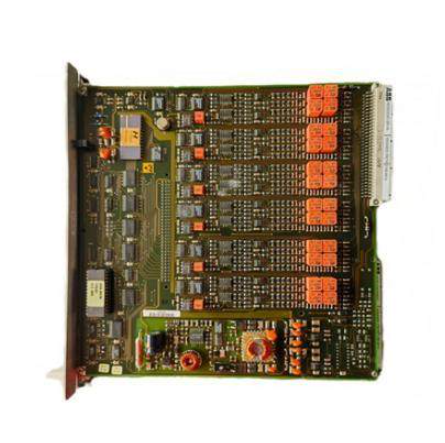Metallurgical archaeology explains resources, technology, and civilization
Metallurgy is an important part of ancient handicraft industry, involving ore mining, metal smelting and circulation, metal ware production, circulation, use and related social organization management and other aspects. Metallurgical archaeology can establish the development lineage of metallurgical technology, reveal the production and organization mode of metallurgical activities, explain the relationship between resources, technology and civilization development from multiple perspectives, provide a scientific basis for understanding major historical issues such as civilization evolution and national development, and protect and inherit excellent traditional culture.
Through the investigation, excavation and comprehensive study of mining and metallurgical sites, a metallurgical archaeological interpretation system on the relationship between metal resources, metallurgical technology and civilization development has been preliminarily established. The metallurgical archaeology research team of the Chinese Civilization Exploration Project has continued to carry out field archaeological investigations of mining and smelting sites for up to 20 years in various places, and hundreds of new copper, tin and lead mining and smelting sites in the pre-Qin period have been discovered in the Hexi Corridor, southern Shanxi, western Henan, western Liaoning, and the middle and lower reaches of the Yangtze River, and some sites have been excavated. For example, the earliest bronze smelting site in China has been found in Xicheng Yi Site in Zhangye, Gansu Province, and its metal resources come from nearby mines. Combined with the early discovery of copper objects in Xinjiang, Qinghai and other places, it is now very sure that China's bronze metallurgy technology came from outside the region, and the northwest region is the key to the spread of bronze metallurgy technology to the Central Plains. However, only in the Central Plains, the first generation of copper tin binary material separation, smelting and casting separation, on the basis of simple casting to create a block mold casting based smelting tradition, to achieve the perfect combination of bronze industry and ritual, and this smelting system and bronze ware use system radiation to the surrounding areas.

Bronze smelting technology came from the outside, in the Central Plains in the Erlitou culture period to complete the transformation of block mold casting technology, is the first peak of local creation in the history of Chinese metallurgy, highlighting the integration and innovation ability of Chinese civilization in technology and culture. This organizational mode characterized by casting technology innovation, remote access to metal resources, effective control of bronze production, and the ritual and music system based on bronze as the carrier made the establishment of a complete set of bronze metallurgy industry management system from central to local, from centralized to decentralized within a larger geographical scope, becoming an important part of complex social management. To some extent, it enriched the country's management experience, and then promoted the origin and early development of Chinese civilization, making the Central Plains an important factor in the stable civilization center of East Asia.
It should be pointed out that although external technical factors can be found in early copper mining, smelting and casting in China, the decoration, manufacturing technology and use combination of the bronze wares of the Xia, Shang and Zhou dynasties are clearly different from other bronze civilizations in the world. The formation of the block mold casting technique tradition in the central Plains with Henan, Shanxi and Shaanxi as the center is the inevitable result of the development, exchange and selection of culture and technology. On the one hand, the emerging nobility in the Erlitou culture period chose the bronze ware from the west to highlight its identity as the carrier of the tripod. On the other hand, at that time, the craftsmen in the Central Plains had a full understanding of the characteristics of the soil and the full understanding of the ceramics, and the mature pottery techniques such as mold making and mold making in the Longshan era also became the basis of the mold casting technology of bronze vessels. In Erlitou culture period, a large number of bronze ware with beautiful shape and thin walls were also found, which indicates that the pottery making technology and bronze casting technology were quite mature at that time. The results show that the chemical composition and microstructure of most Tao fan in pre-Qin period are consistent. This means that as early as the Erlitou period, the production technology of casting copper pottery has been fully developed, in this sense, specialized production should be an important form of organization of the metallurgical industry at that time, but also an important carrier of technical inheritance and development. It was during the pre-Qin period that there was a relatively developed tradition of bronze pottery casting technology, and after the block iron-making technology with the same foreign characteristics spread to the Central Plains in the border zone between Henan, Shaanxi and Jin, pig iron smelting and casting technology were rapidly invented in the early Spring and Autumn period, and a complete technical system of smelting with pig iron and using raw iron to make steel was basically formed in the Qin and Han Dynasties. It completed another major turning point in the history of Chinese metallurgy, and was the key driving force for the prosperity and social development of the Qin and Han Dynasties.
- EMERSON
- Honeywell
- CTI
- Rolls-Royce
- General Electric
- Woodward
- Yaskawa
- xYCOM
- Motorola
- Siemens
- Rockwell
- ABB
- B&R
- HIMA
- Construction site
- electricity
- Automobile market
- PLC
- DCS
- Motor drivers
- VSD
- Implications
- cement
- CO2
- CEM
- methane
- Artificial intelligence
- Titanic
- Solar energy
- Hydrogen fuel cell
- Hydrogen and fuel cells
- Hydrogen and oxygen fuel cells
- tyre
- Chemical fiber
- dynamo
- corpuscle
- Pulp and paper
- printing
- fossil
- FANUC
- Food and beverage
- Life science
- Sewage treatment
- Personal care
- electricity
- boats
- infrastructure
- Automobile industry
- metallurgy
- Nuclear power generation
- Geothermal power generation
- Water and wastewater
- Infrastructure construction
- Mine hazard
- steel
- papermaking
- Natural gas industry
- Infrastructure construction
- Power and energy
- Rubber and plastic
- Renewable energy
- pharmacy
- mining
- Plastic industry
- Schneider
- Kongsberg
- NI
- Wind energy
- International petroleum
- International new energy network
- gas
- WATLOW
- ProSoft
- SEW
- wind
- ADVANCED
- Reliance
- YOKOGAWA
- TRICONEX
- FOXBORO
- METSO
- MAN
- Advantest
- ADVANCED
- ALSTOM
- Control Wave
- AB
- AMAT
- STUDER
- KONGSBERG
- MOTOROLA
- DANAHER MOTION
- Bently
- Galil
- EATON
- MOLEX
- Triconex
- DEIF
- B&W
- ZYGO
- Aerotech
- DANFOSS
- KOLLMORGEN
- Beijer
- Endress+Hauser
- MOOG
- KB
- Moxa
- Rexroth


Email:wang@kongjiangauto.com






















































































































